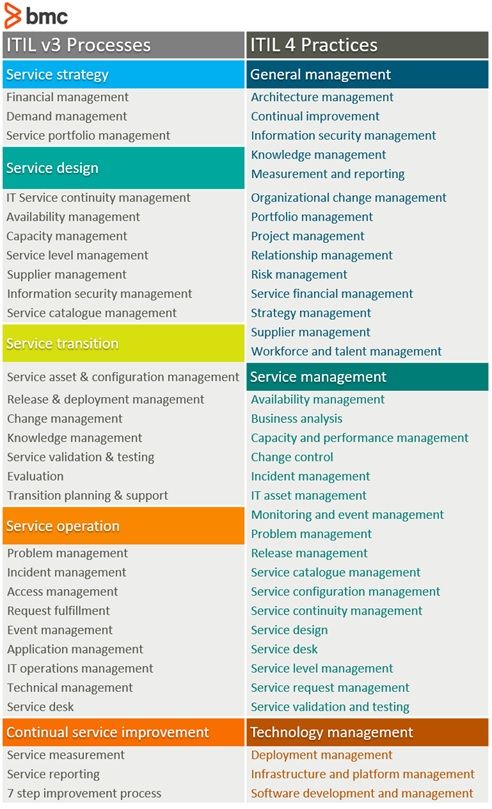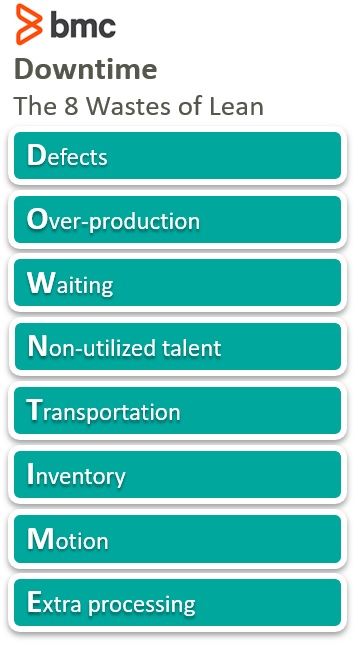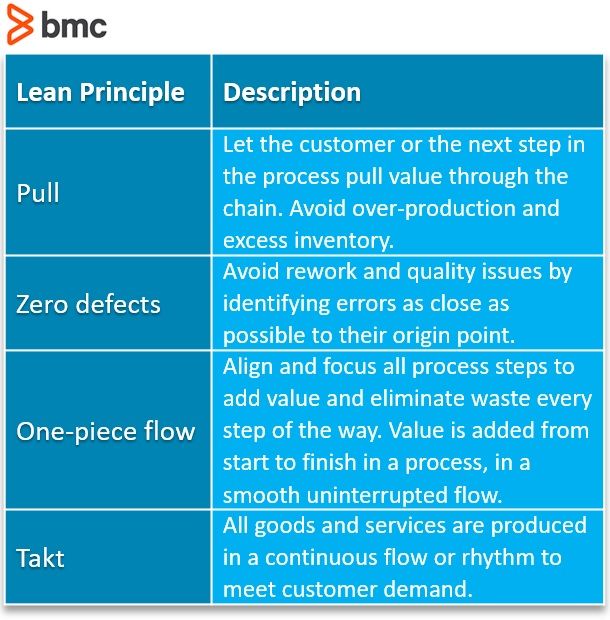Organizations use ITIL® to create business value and deliver quality IT services. Organizations also use Lean Six Sigma (LSS) for managing overall production and process quality, which in turn creates value for their customers. ITIL is used in ITSM. LSS is heavily used in all processes, from manufacturing to products to services. Traditionally, they comfortably co-exist in separate organizational silos.
In this blog, I’ll explore the different needs that ITIL and LSS satisfy, where their usage intersects, and how and where they should be used cooperatively in an ITSM environment.
What is ITIL?
ITIL is a global best practice framework for aligning IT with business values and for delivering IT services. Figure 1 shows the processes and practices available in ITIL v3 and ITIL 4. Organizations use ITIL to improve the value of their services by focusing on co-creating business value and solving business issues, as well as improving their IT capabilities. ITIL provides a framework for aligning all of an organization’s activities, components, and resources to implement capabilities that create business value.

Figure 1: Processes and practices framework items in ITIL v3 and ITIL 4
What is Lean Six Sigma?
Lean Six Sigma (LSS) combines two popular methodologies—Lean and Six Sigma—to improve quality, cost, delivery, and nimbleness. LSS provides methodologies and tools for continuous improvement through process optimization, which leads to increased efficiency and profitability.
Lean Methodologies
Lean methodologies emphasize eliminating eight types of process waste (figure 2) by applying four principles (figure 3).

Figure 2: The eight wastes Lean aims to eliminate. The first letter of each waste category spells the acronym DOWN TIME

Figure 3: The four Lean principles
Six Sigma
Six Sigma emphasizes identifying and eliminating the causes of process defects and reducing process variation, using statistical quality control techniques and data-driven methodologies, such as:
- Define-Measure-Analyze-Improve-Control (DMAIC) for existing process improvement
- Define-Measure-Analyze-Design-Verify (DMADV) for new process development
Combined: Lean Six Sigma
Used together, LSS attempts to:
- Prevent process defects
- Streamline and make processes nimbler
- Decrease lead time
Lean Six Sigma is universally applicable. It can be applied to all kinds of products, domains, and industries.
Integrating ITIL with Lean Six Sigma
ITIL and Lean Six Sigma is not a case of either or. Many organizations use ITIL for IT business alignment and Lean Six Sigma for non-IT processes, products, and goods production.
There are several areas where ITIL and LSS can easily be integrated. It’s important to note that the ITIL framework defines the “what” of ITSM: the processes, practices, and workflows that should be set up and what’s needed in a workflow. But ITIL doesn’t specify “how” to set up the workflow.
For example, there are service desk processes and practices in ITIL v3 and 4, but the standards don’t specify whether you should use BMC Helix for service and operations management or whether another software package is preferred. For integration, ITIL 4 has become more flexible in embracing other frameworks, such as Lean, DevOps, and Agile, and providing guidance on their use.
There are many opportunities for using Lean Six Sigma in ITIL practices. Here are some relevant practices where Lean Six Sigma methods can be used in an ITSM\ITIL environment:
- Continual Improvement
- Measurement and reporting
- Availability management
- Capacity and performance management
- Incident management
- Problem management
- Monitoring and event management
- Service level management
Each of these practices (and others) can benefit from using LSS strategies such as DMAIC, DMADV, waste elimination, or adherence to the four principles. If you’re already using Lean Six Sigma in your production processes, you should definitely consider using it for ITSM as well. Using LSS will provide for business alignment between your ITSM environment and your line of business processes. Software deployment has become a product in the age of software. As much as possible, it should be managed the same way you manage your other production processes.
Many organizations already have expertise in using LSS and the strategies are a great fit for your ITSM\ITIL workflows. You don’t need to reinvent the wheel in this case and come up with new strategies for your workflows. Integrating ITIL and Lean Six Sigma in your ITSM system just makes sense and should be encouraged.
Additional resources
For more on this topic, browse our BMC Service Management Blog or check out these articles:







